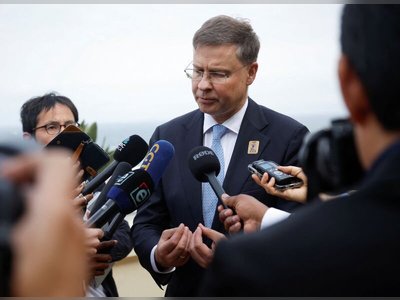China Accelerates to the Forefront in Global Nuclear Fusion Race
With ambitious funding, talent repatriation and rapid prototyping, Beijing positions itself to lead in harnessing sun-like energy
China is mounting a sustained push to become the first nation to master large-scale, commercial nuclear fusion.
Through a coordinated strategy combining heavy state funding, returnee scientific recruitment and fast-paced reactor development, Beijing is aiming to challenge Western dominance in a field long viewed as both energetically transformative and strategically critical.
In January 2025, China’s Experimental Advanced Superconducting Tokamak (EAST)—also dubbed its “artificial sun”—sustained a plasma loop for 1,066 seconds, more than doubling its previous record of 403 seconds.
The breakthrough demonstrates enhanced control of high-confinement plasma conditions at extreme temperatures, a milestone in the march toward net energy gain.
But the EAST achievement is only one node in a broader roadmap.
China is now pushing ahead with its next reactor milestone: the BEST (Burning Plasma Experimental Superconducting Tokamak), which aims to generate five times the energy input (a gain factor of five) and begin operation in 2027.
In October 2025, the project installed its Dewar base—a critical component of the machine’s main vessel—signifying a major step into full assembly.
Beyond tokamaks, satellite imagery has revealed rapid construction of a laser-ignition fusion facility in Sichuan province, resembling the U.S. National Ignition Facility in layout.
Analysts suggest the facility could power both clean-energy research and advanced weapons simulations.
Parallel to the infrastructure build, China is investing heavily in materials science and engineering.
Researchers have developed a “super steel” alloy capable of enduring both ultra-high magnetic fields and cryogenic conditions—an innovation slated for the central solenoid of the BEST reactor.
Moreover, China is pursuing a hybrid fusion-fission power plant, slated for completion by 2031, that would fuse light atoms while simultaneously breeding fissile material.
The planned Xinghuo reactor is designed to produce 100 megawatts of continuous electricity.
While the United States and Europe continue to invest in private fusion firms and collaborative research, China’s integrated, state-orchestrated approach is reshaping competitive dynamics.
Its capacity to build infrastructure at scale, align industrial supply chains, and centralize strategic pursuit has given it a compelling first-mover posture in a global race where scientific and geopolitical ambition converge.
Through a coordinated strategy combining heavy state funding, returnee scientific recruitment and fast-paced reactor development, Beijing is aiming to challenge Western dominance in a field long viewed as both energetically transformative and strategically critical.
In January 2025, China’s Experimental Advanced Superconducting Tokamak (EAST)—also dubbed its “artificial sun”—sustained a plasma loop for 1,066 seconds, more than doubling its previous record of 403 seconds.
The breakthrough demonstrates enhanced control of high-confinement plasma conditions at extreme temperatures, a milestone in the march toward net energy gain.
But the EAST achievement is only one node in a broader roadmap.
China is now pushing ahead with its next reactor milestone: the BEST (Burning Plasma Experimental Superconducting Tokamak), which aims to generate five times the energy input (a gain factor of five) and begin operation in 2027.
In October 2025, the project installed its Dewar base—a critical component of the machine’s main vessel—signifying a major step into full assembly.
Beyond tokamaks, satellite imagery has revealed rapid construction of a laser-ignition fusion facility in Sichuan province, resembling the U.S. National Ignition Facility in layout.
Analysts suggest the facility could power both clean-energy research and advanced weapons simulations.
Parallel to the infrastructure build, China is investing heavily in materials science and engineering.
Researchers have developed a “super steel” alloy capable of enduring both ultra-high magnetic fields and cryogenic conditions—an innovation slated for the central solenoid of the BEST reactor.
Moreover, China is pursuing a hybrid fusion-fission power plant, slated for completion by 2031, that would fuse light atoms while simultaneously breeding fissile material.
The planned Xinghuo reactor is designed to produce 100 megawatts of continuous electricity.
While the United States and Europe continue to invest in private fusion firms and collaborative research, China’s integrated, state-orchestrated approach is reshaping competitive dynamics.
Its capacity to build infrastructure at scale, align industrial supply chains, and centralize strategic pursuit has given it a compelling first-mover posture in a global race where scientific and geopolitical ambition converge.










